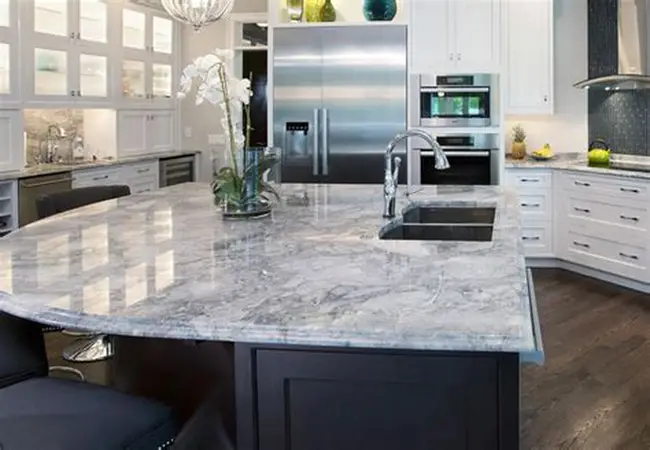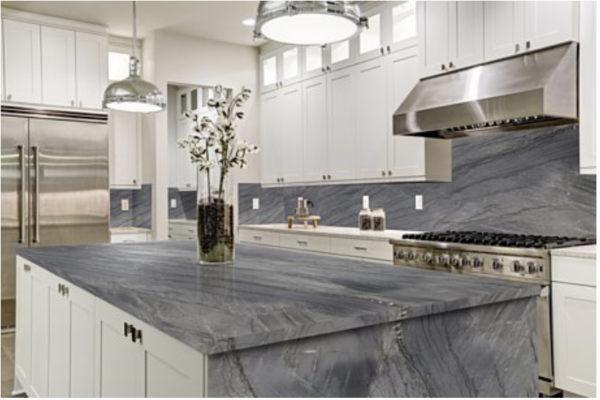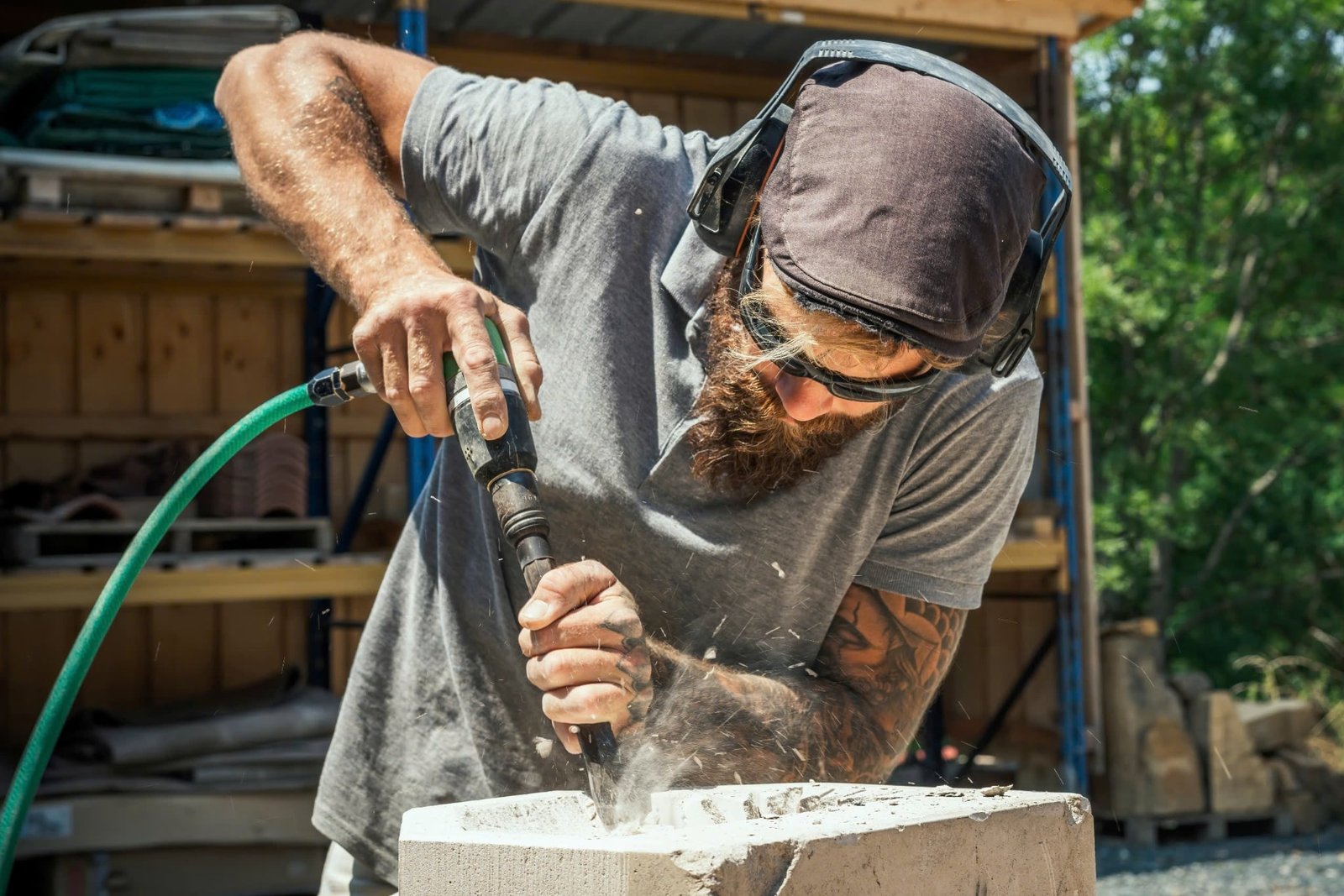
Granite countertops are highly prized for their elegance, durability, and resistance to heat and scratches.
Granite countertops are highly prized for their elegance, durability, and resistance to heat and scratches. But over time, even the most stunning granite kitchen countertops or granite bathroom countertops can fall victim to unsightly discoloration. Whether you’re dealing with cloudy spots, water rings, or darkened granite, knowing how to fix discolored granite countertops can save you from costly replacement or resurfacing.
In this comprehensive guide, you’ll learn the causes of granite discoloration, effective DIY treatments, when to call a professional, and how to prevent future issues. These tips apply to all granite types—including black granite countertops, white granite countertops, and exotic stones like blue pearl granite countertops.

Understanding Granite Discoloration: What Causes It?
Granite is a natural stone, typically sealed to resist stains. However, discoloration can still happen due to:
| Cause | Description |
|---|---|
| Water Damage | Water seeping through worn sealant causes dark patches. |
| Oil Stains | Cooking oils, lotions, and cosmetics penetrate porous areas. |
| Chemical Burns | Acids like vinegar or bleach react with the minerals. |
| Improper Cleaning | Film buildup from soap, ammonia, or Windex creates a cloudy appearance. |
| Sealer Residue | Over-application or uneven sealing leads to hazy or blotchy surfaces. |
Different discolorations may need different repair strategies. Before applying a treatment, identify the root cause.

Step-by-Step: How to Fix Discolored Granite Countertops
1. Perform the Water Test
Before taking action, test the seal:
- Pour a small amount of water on the granite.
- Wait 10–15 minutes.
- If the water darkens the granite, it’s time to reseal.
Use this test to determine whether discoloration is due to absorption or residue.
2. Clean With the Right Solution
Avoid harsh chemicals that can worsen the issue. Use:
- A pH-neutral granite cleaner
- A microfiber cloth
- Distilled water (to avoid mineral deposits)
Spray the cleaner, let it sit for 5 minutes, and wipe clean. Repeat until buildup is removed.
3. Remove Oil-Based Stains With Poultice
For dark stains caused by oils or grease:
You’ll Need:
- Baking soda
- Water or acetone
- Plastic wrap
Steps:
- Mix baking soda and acetone into a paste.
- Apply generously to the stained area.
- Cover with plastic wrap and let sit 24–48 hours.
- Wipe clean and reseal the granite.
This works well for granite slabs for countertops that have absorbed kitchen oils.
4. Remove Organic or Rust Stains
Organic stains (coffee, wine, fruit juice) may turn granite brown or pink. Use hydrogen peroxide and baking soda as a poultice.
For rust, use a non-acidic rust remover specifically designed for natural stone vs engineered stone countertops.
5. Fix Cloudy Spots and Haze
Cloudy spots are often sealer buildup or chemical damage.
- Apply acetone or a specialized granite haze remover.
- Gently buff with a soft cloth in circles.
- Do not use vinegar, bleach, or scouring pads.
Cloudiness is common on polished granite countertops with improper maintenance.
Learn more: How to Fix Dull Granite Countertops?
6. Address Water Rings and Dark Patches
Water rings from glasses or cooking can leave dark areas:
- Use a poultice or simply let the area dry (if caused by recent moisture).
- Reseal once dry to prevent reabsorption.
7. Repair Chemical Etching
Etching appears as dull white marks or rings on honed or polished granite.
- Use a granite polishing powder or paste.
- Buff the area using a felt pad or hand polisher.
For extensive etching, professional restoration may be required.
Preventing Future Discoloration
Keeping your granite vibrant starts with smart maintenance habits:
- Clean daily with a pH-balanced cleaner.
- Wipe spills immediately, especially oils and acidic substances.
- Use coasters, trivets, and cutting boards.
- Seal annually or test with the water drop method.
- Avoid acidic or abrasive cleaners.
Explore How to Fix Uneven Granite Countertops if you’re facing alignment issues during stain repair.
When to Call a Granite Specialist
If discoloration persists after multiple attempts, or if stains are extensive across custom granite countertops or high-end installations, call a professional granite restoration service.
Search for Top-rated granite countertop installers near me or visit your granite countertop showroom [location] for expert help.
Related Questions
Is granite extrusive or intrusive?
Granite is an intrusive igneous rock that forms from slow-cooling magma beneath the earth’s surface. Learn more:
What tools help with granite repairs?
Use a suction cup for lifting or adjusting granite slabs safely during repairs.
Final Thoughts: Bring Back the Shine
Discolored granite countertops don’t mean the end of your stone’s beauty. With the right cleaning techniques, poultices, and prevention steps, you can restore and maintain a luxurious finish on:
- Brown granite countertops
- Blue pearl granite countertops
- White granite countertops
- And even granite countertops for outdoor kitchens

